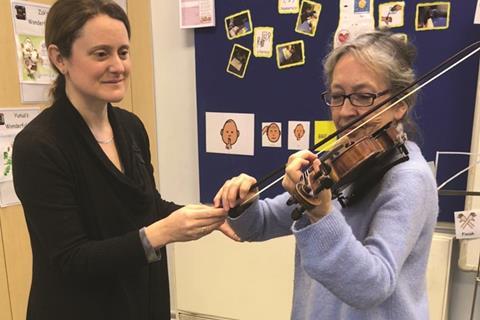Teaching those who have come to their instrument later in life can be an extremely rewarding process, writes Ros Stephen. But the psychological complexities must also be handled with delicacy

This is an extract of a longer article in the March 2018 issue of The Strad. To read it in full, download the issue now on desktop computer or buy the print edition
I have been teaching the violin to adult beginners and improvers for about 15 years. I find teaching adults very fruitful: articulate, enthusiastic and self-motivated, they tend to take on board information more easily and quickly than children, and are generally more likely to go home and work on topics covered in the lesson.
Learning an instrument can open up a wealth of new opportunities: music enables us to express ourselves in a new way, offers opportunities to meet new people, and provides an outlet for creativity. I have taught many adults who started with no prior musical experience, who are now enjoying playing in amateur orchestras, chamber ensembles and folk groups.
Teaching adults can, however, be more complex than teaching children. Children generally have lower expectations, are less set in their ways, and (hopefully) don’t yet carry the baggage of ingrained insecurities, echoes of negative voices or regrets of missed opportunities. As an adult, voluntarily becoming a complete beginner on a technically challenging instrument, and investing time and money in lessons, requires a lot of courage.
A new student may have spent years thinking about starting the violin before finally taking the plunge. As teachers we need to be sensitive to people’s anxieties, but it’s also important not to allow your student’s insecurities to dominate the lessons. I try to steer people away from excuses and rationalisations and try (with varying degrees of success) to get them to focus on effective practice, and slow and steady work on technique and musicianship.
Starting a new instrument is a bit like learning to drive: there are so many things to take on board at first, and it takes time and repetition for it all to become automatic.



































No comments yet